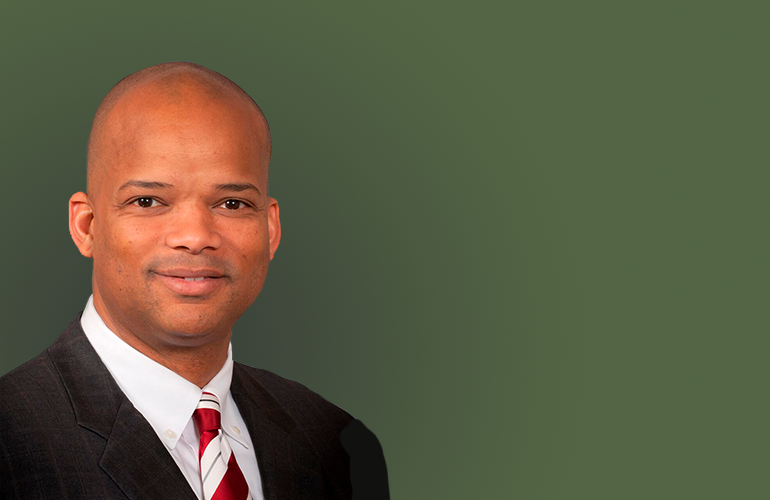 Subscribe
Subscribe- Login
-
/
Sign Up
- US Black Engineer
- >>
- Articles
- >>
- DIVERSITY VOICES
- >>
- Robert Curbeam and Space
|
Getting your Trinity Audio player ready...
|
It’s late summer and it’s hurricane season. Almost 20 years ago today, Robert Curbeam looked down on the Pacific Ocean during his first space voyage and saw Typhoon Winnie circling the western North Pacific.
In its mature stage, the weather front’s outer eye wall had a diameter of 370 km. It was the fourth super typhoon in 1997.
Within the unusually large outer eye wall existed an inner eye wall, which consisted of a ring of shallow clouds with a diameter of ∼50 km.
“At first, all I could think was how beautiful it was,” Curbeam said at the recent launch of Raytheon’s Visible Infrared Imaging Radiometer Suite (VIIRS) program, a key part of NOAA’s polar satellite program.
During the 1997 mission, Curbeam was among the few people who directly observed devastating weather from space.
As Super Typhoon Winnie rolled into view, spanning 300-400 miles of the southern Pacific Ocean, his sense of wonder reportedly turned dread.
“I remember thinking, ‘What must they be dealing with down there?’” Curbeam said.
The Discovery crew sent pictures to weather analysts around the clock to help avert the worst, but Winnie still left hundreds dead and caused billions in damage.
Now, as vice president and deputy of Space Systems for Raytheon Space and Airborne Systems, Curbeam is responsible for technologies that serve the global need for uninterrupted, high-fidelity weather data. Raytheon’s Visible Infrared Imaging Radiometer Suite (VIIRS) program, a key part of NOAA’s current polar satellite program help provide accurate predictions.
Prediction is vital not just for storm preparedness, but for weather affecting everyday life — drought patterns, flash flood zones, rough seas, rainfall and cloud cover, he said. That information is critical for farmers, transportation companies, commercial aviation and military operations.
“The more satellites we have, the more robust the information we can develop,” Curbeam said. “More observations in rapid succession means greater storm track fidelity and more accurate long-term weather forecasting.”
At a recent National Meteorological Society conference, the former NASA astronaut sat down with News With A Twist Studio. Here are three things he said.
Space is beautiful
“I tell everybody to imagine the best picture from space you’ve seen. It’s a hundred times more beautiful than it really is. You know, you think about the movie, still pictures. It is absolutely wonderful,” Curbeam said.Don’t take technology for granted
“It’s something I think we take for granted. You guys will always be able to give the accurate weather forecast, and those satellite pictures are always there. They’re there because of what Raytheon and the other companies that put the satellite,” Curbeam said.STEM Education is essential
“It is important not only for me because I love it, but I think it’s important for all of us. These are the people who are going to design that next software app that you use on your phone. That next phone that you use the next global positioning system to the people that are learning that today, that are going to take my place as these technological leaders in industry and government in the world,” Curbeam said.
Robert Curbeam joined the astronaut corps in 1994 after a distinguished career as a Navy pilot. He served on three space shuttle missions and logged over 900 hours in space. Curbeam made seven space walks totaling over 45 hours.
As a leader in the Space Systems organization, Curbeam heads the Trident and VIIRS program areas and provides oversight for other Space Systems programs at Raytheon Space and Airborne Systems. Before joining Raytheon, he was president of the Aerospace and Defense Division for ARES Corporation.
He held a wide range of positions with NASA as director of Safety, Reliability, and Quality Assurance for the Constellation program, deputy director of Flight Crew Operations; and Spacecraft Communicator branch chief.
Curbeam was second-in-command for safety across NASA, as the deputy associate administrator of Safety and Mission Assurance at NASA headquarters. During his tenure with NASA, he served on three space shuttle missions and seven spacewalks.
He retired from the U.S. Navy after 23 years of service. He is a graduate of the Navy Fighter Weapons School (TOPGUN) and Navy Test Pilot School; was lead project management officer for the F-14 Air-to-Ground Weapons Separation Flight Test Program; logged more than 3,000 flight hours in 25 different aircraft and spacecraft.
Curbeam holds an advanced degree in aeronautical and astronautical engineering and a Master of Science degree in aeronautical engineering from the Naval Post Graduate School in Monterey, Calif. He received his bachelor’s degree with merit in aerospace engineering from the U.S. Naval Academy in Annapolis, Md.


